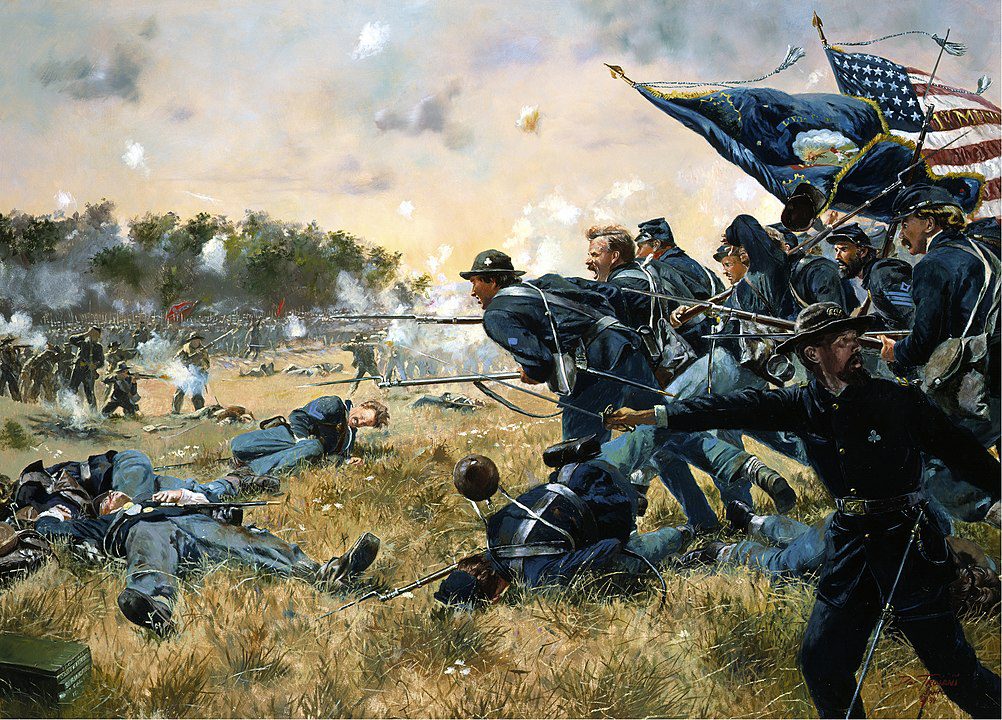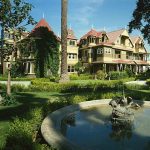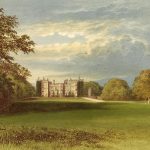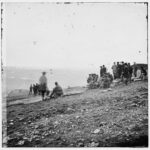
Gettysburg is not only a pivotal site in American history but also one of the most haunted places in the United States. Known for the Civil War’s bloodiest battle, it stands as a symbol of sacrifice, courage, and tragedy. Over the years, countless visitors have reported ghostly encounters, linking the spirits of the fallen to this hallowed ground. Beyond these paranormal tales, Gettysburg’s haunting allure has inspired artists to explore its spectral themes in a variety of creative mediums.
The supernatural elements of Gettysburg are deeply rooted in its historical significance, drawing paranormal enthusiasts and artists alike. Stories of apparitions, shadowy figures, and unexplained sounds echo through time, blending history with folklore. These tales have become a foundation for paintings, photography, literature, and crafts that seek to capture the essence of the battlefield’s haunted past. The intersection of history, legend, and art has cemented Gettysburg as a cultural touchstone for ghost stories and creative expression.
Artists have long been drawn to the eerie yet compelling atmosphere of Gettysburg, translating its ghostly tales into visual and literary masterpieces. From ethereal battlefield paintings to spine-chilling documentaries, the ghost stories of Gettysburg transcend traditional historical narratives. They offer a glimpse into the emotional and spiritual weight carried by this historic site, enriching the cultural memory of its tragic past.
By delving into the stories of Gettysburg’s ghosts and their portrayal in art, we can better understand how history shapes folklore. Artistic expressions of these haunting tales allow audiences to connect emotionally with history while preserving the legends for future generations. This article explores the ghostly lore of Gettysburg, its artistic representations, and the enduring fascination it holds for visitors, historians, and creatives.
The History Behind the Haunting
The Battle of Gettysburg, fought from July 1 to July 3, 1863, marked a turning point in the Civil War, claiming over 50,000 casualties. The intensity of the conflict and the scale of human suffering left an indelible mark on the land. Thousands of soldiers lost their lives, and their remains often went unburied for days, creating a somber and macabre legacy. It is no surprise that Gettysburg became a fertile ground for ghost stories and paranormal activity.
The aftermath of the battle brought a wave of despair and trauma that permeated the town and surrounding areas. Local residents who witnessed the devastation often recounted chilling tales of spectral figures wandering the fields. These stories were passed down through generations, cementing Gettysburg’s reputation as a haunted location. The connection between such intense emotional energy and paranormal phenomena has been a cornerstone of ghost lore tied to historical sites.
Among the most famous legends is that of Jennie Wade, the only civilian casualty of the battle, whose spirit is said to haunt her former home. Other stories include eerie sightings at Devil’s Den, where countless soldiers fought and died amid the rocky terrain. These accounts underscore how the battlefield’s historical trauma continues to fuel belief in supernatural occurrences. The ghosts of Gettysburg are not merely figments of imagination but enduring symbols of the war’s tragic toll.
Historians and paranormal enthusiasts alike have sought to explain the abundance of ghost stories linked to Gettysburg. Some attribute these phenomena to the sheer magnitude of death and suffering that occurred, creating what many describe as a “psychic imprint.” Whether through eyewitness accounts or folklore, Gettysburg’s ghosts remain a testament to the battlefield’s profound impact on American history and culture.
Iconic Ghost Sightings in Gettysburg
One of Gettysburg’s most famous ghost stories centers on Jennie Wade, who was tragically killed by a stray bullet while baking bread for soldiers. Visitors to the Jennie Wade House have reported hearing unexplained footsteps, disembodied voices, and even feeling a ghostly touch. Her story captures the human side of the war, making her spectral presence all the more poignant. Many believe her restless spirit lingers as a reminder of the innocent lives affected by the conflict.
Devil’s Den, a rocky outcropping where fierce fighting took place, is another hotspot for ghost sightings. Soldiers clad in Civil War uniforms have been seen wandering the area, only to vanish moments later. Photographers and visitors often report technical malfunctions, as if the spirits are interfering with their devices. The energy of this location, steeped in violence and desperation, makes it one of the most unnerving spots in Gettysburg.
Little Round Top, a strategic hill during the battle, is also rife with ghostly tales. Park rangers and tourists alike have described encounters with spectral soldiers who appear lost or disoriented. These apparitions are often accompanied by the sounds of gunfire, adding to the eerie authenticity of the experiences. The persistence of these ghostly phenomena reinforces the idea that the battlefield’s spirits are tied to the dramatic events that unfolded there.
Sachs Covered Bridge, used by soldiers during the war, has its own share of ghostly legends. Some stories speak of soldiers hanged from the bridge who now haunt the area, while others describe mysterious lights and shadowy figures. The bridge’s quiet, picturesque setting contrasts with the chilling tales associated with it. These accounts make it a popular destination for ghost hunters and history buffs alike, blending the past with the paranormal.
The Artistic Representation of Gettysburg’s Ghosts
Art has long served as a medium for interpreting the emotional weight of Gettysburg’s ghost stories. Historical paintings of the battlefield often convey an eerie atmosphere, capturing the lingering sorrow of the war. Artists like Mort Künstler and Dale Gallon have created works that depict not only the battle’s intensity but also its haunting aftermath. These paintings evoke a sense of timelessness, bridging the gap between history and the supernatural.
In modern times, Gettysburg’s ghost stories have inspired a range of artistic endeavors, from haunting illustrations to intricate sculptures. Local artists often incorporate spectral themes into their work, drawing on the area’s rich paranormal lore. These creations are not just artistic expressions but also cultural artifacts that preserve the legends of Gettysburg. The blend of history and imagination allows these works to resonate with audiences on a deeper level.
The influence of Gettysburg’s ghost lore extends beyond visual art to film and television. Documentaries and dramatizations often explore the battlefield’s haunted reputation, using creative visuals to depict ghostly encounters. Shows like Ghost Adventures have filmed episodes in Gettysburg, bringing its spectral tales to a global audience. These portrayals reinforce the enduring fascination with the battlefield’s paranormal elements while showcasing the creative possibilities of the medium.
Local artisans and craftspeople also contribute to the artistic portrayal of Gettysburg’s ghosts. From handmade jewelry to painted landscapes, their work reflects the town’s unique blend of history and folklore. Many of these pieces are sold in local shops or displayed in galleries, offering visitors a tangible connection to the battlefield’s haunted legacy. The artistic representation of Gettysburg’s ghosts ensures that their stories remain alive, inspiring both reflection and creativity.
How Gettysburg’s Ghosts Are Portrayed in Literature
Gettysburg’s ghost stories have been immortalized in literature, weaving together historical facts and spectral folklore. Numerous books explore the battlefield’s paranormal side, blending narrative depth with vivid imagery. Titles like Ghosts of Gettysburg by Mark Nesbitt have become classics, offering detailed accounts of ghost sightings and their historical contexts. These works serve as both entertainment and historical preservation, drawing readers into the eerie yet fascinating world of Gettysburg’s spirits.
Fictional works inspired by Gettysburg often use ghostly elements to humanize the tragedy of the Civil War. Through haunting tales, authors explore themes of loss, sacrifice, and the enduring impact of war. For example, short stories and novels often feature spectral soldiers wandering the battlefield, symbolizing unresolved conflicts. This creative approach helps readers connect emotionally with history, transforming facts into compelling narratives.
Poetry also plays a role in capturing the haunting essence of Gettysburg. Poets craft verses that evoke the battlefield’s sorrowful atmosphere, often drawing on imagery of restless spirits and moonlit landscapes. These works add a lyrical quality to the ghost lore, enhancing its emotional resonance. By blending history with poetic expression, authors ensure that Gettysburg’s stories linger in the hearts and minds of their audience.
Historians and folklorists have contributed significantly to documenting Gettysburg’s ghostly legends in academic and non-fiction works. Their research provides a foundation for understanding how history and folklore intertwine, shaping the cultural memory of the battlefield. These books often delve into the psychological and emotional factors that perpetuate ghost stories, offering a deeper perspective on why Gettysburg remains a focal point for paranormal enthusiasts and literary artists alike.
The Role of Photography in Gettysburg Ghost Lore
Photography has played a pivotal role in cementing Gettysburg’s reputation as a haunted site. During the late 19th and early 20th centuries, spirit photography became popular, with several eerie images purportedly capturing ghostly apparitions on the battlefield. These photographs fascinated the public, blending fascination with the supernatural and the emerging technology of the camera. While skeptics often dismissed these images as hoaxes, they undeniably contributed to Gettysburg’s ghostly mystique.
One of the most famous examples of ghost photography in Gettysburg involves images of spectral soldiers appearing near monuments or in open fields. These photographs often show faint, translucent figures that seem to defy logical explanation. Paranormal investigators and enthusiasts continue to debate the authenticity of such images, with some attributing them to environmental factors or camera errors. Regardless of their origins, these photos keep the legend alive, fueling curiosity and debate.
In modern times, advancements in photographic technology have allowed for new attempts at capturing paranormal activity. Digital cameras and thermal imaging devices are often used by ghost hunters exploring Gettysburg. These tools have captured strange anomalies, such as unexplained lights or shadowy figures, further deepening the intrigue. Even skeptics admit that some of these images are difficult to explain, adding to Gettysburg’s reputation as a hotspot for paranormal activity.
The role of photography in Gettysburg’s ghost lore is as much about storytelling as it is about evidence. Each image, whether authentic or staged, invites viewers to ponder the mysteries of the past. These photographs serve as visual artifacts, bridging the gap between history and the paranormal. Through the lens of a camera, Gettysburg’s spectral tales gain new dimensions, ensuring their place in the cultural imagination.
Art Tours and Events in Gettysburg
Gettysburg embraces its haunted legacy through a variety of art tours and events that blend history, folklore, and creative expression. Ghost-themed art walks allow visitors to explore galleries showcasing works inspired by the battlefield’s spectral tales. These events often feature local artists who bring Gettysburg’s ghost stories to life through paintings, sculptures, and mixed-media installations. The combination of art and storytelling offers a unique way to experience the town’s haunted history.
Annual events like the Gettysburg Ghost Festival celebrate the town’s paranormal culture, attracting tourists and locals alike. These festivals often include art exhibits, live performances, and workshops that focus on ghostly themes. Participants can learn about the history behind the hauntings while engaging with creative interpretations of the stories. The immersive nature of these events makes them a highlight of Gettysburg’s cultural calendar.
Museums and historical societies in Gettysburg also play a role in preserving and showcasing ghost-inspired art. Special exhibits often feature works that explore the intersection of history and the supernatural, giving visitors a chance to reflect on the town’s unique legacy. These institutions provide context for the artistic representations, helping audiences understand how folklore and history shape creative expression. By highlighting the artistic side of Gettysburg’s ghost stories, these venues enrich the visitor experience.
Interactive experiences, such as ghost hunts combined with art workshops, offer another layer of engagement for tourists. Participants can explore haunted locations, learn about their histories, and create their own art inspired by what they’ve seen and heard. These events not only entertain but also foster a deeper appreciation for the town’s haunted legacy. By merging creativity with paranormal exploration, Gettysburg ensures its ghost stories remain relevant and inspiring.
Key Takeaways
- Gettysburg’s ghost stories are deeply rooted in the emotional and historical weight of the Civil War, making it one of the most haunted places in the United States.
- Iconic haunted locations, such as Jennie Wade House and Devil’s Den, offer chilling tales that blend history with the supernatural.
- Artists have captured Gettysburg’s spectral tales through various mediums, including paintings, literature, and photography, preserving its ghostly lore.
- Annual events, art tours, and interactive experiences in Gettysburg celebrate its paranormal culture while fostering creativity.
- The enduring fascination with Gettysburg’s ghosts ensures that its history and folklore remain intertwined, inspiring art, tourism, and storytelling.
FAQs
1. What are the most famous ghost stories from Gettysburg?
Some of the most famous stories include Jennie Wade’s haunting, spectral soldiers at Devil’s Den and Little Round Top, and paranormal activity at Sachs Covered Bridge.
2. Are there specific art styles tied to Gettysburg’s paranormal lore?
Artists often use dark, atmospheric tones, historical realism, and surrealism to capture the eerie essence of Gettysburg’s ghost stories.
3. What role does Gettysburg play in American ghost culture?
Gettysburg is a cornerstone of ghost culture, blending historical trauma with paranormal folklore, inspiring art, literature, and tourism.
4. How do ghost sightings contribute to local art and tourism?
Ghost sightings inspire paintings, photography, and crafts while drawing tourists to events, haunted tours, and art exhibits that celebrate Gettysburg’s spectral legacy.
5. Can visitors see any original artworks inspired by Gettysburg ghosts?
Yes, local galleries, museums, and art tours feature works that depict ghostly themes, often created by artists who live and work in Gettysburg.




